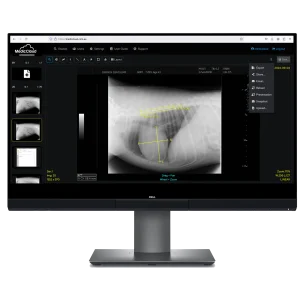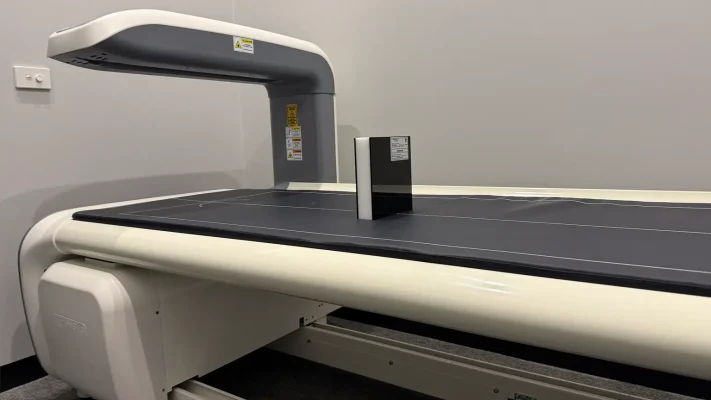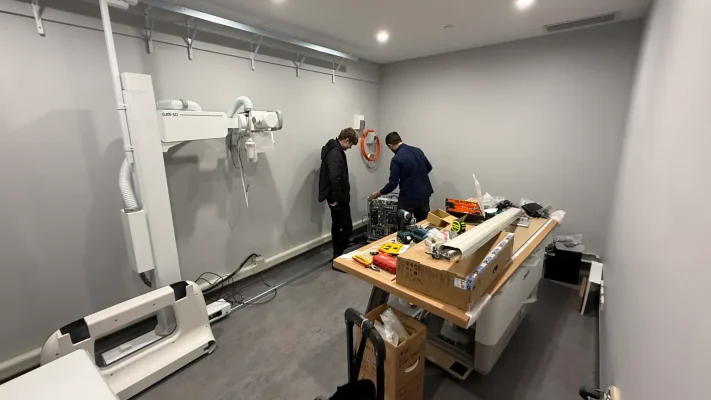Home » What is a Medical-Grade Network?
Why your clinic needs a medical-grade network
In today’s digitally connected healthcare environment, reliable Internet and IT infrastructure are critical. But not all networks are created equal. One of the most misunderstood terms in the medical sector is medical-grade network,and it means far more than just fast internet or a strong Wi-Fi signal.
At Medic Cloud, we support medical practices, imaging centres, and dental clinics every day, so we understand the specific demands your systems must meet. This article outlines the key differences between standard and medical-grade networks, and why those differences matter for your business, compliance obligations, and patient safety.

Sam, Medic Cloud Managing Director
About the medical-grade network
A medical-grade network is a purpose-built IT environment designed to support the secure, compliant, and uninterrupted operation of clinical systems. It’s tailored to meet the unique needs of healthcare workflows, ensuring that critical services such as digital imaging, Electronic Medical Records (EMRs), and Voice over Internet Protocol (VoIP) phone systems remain fast, reliable, and secure.
How it differs from a standard IT setup
| Feature | Standard Network | Medical-Grade Network |
|---|---|---|
| Uptime Requirement | Tolerates occasional downtime | Built for high availability and automatic failover |
| Data Handling | Basic security features | Encrypted data, local compliance with health data laws |
| Device Support | Supports consumer or business-grade equipment | Supports PACS, EMR, MIMS, HL7, DICOM integration |
| Cybersecurity | Antivirus and basic firewalls | Proactive monitoring, MDR, and policy-based control |
| Privacy Law Compliance | Often unaware of legal obligations | Complies with the Australian Privacy Act |
| Redundancy & Backup | Rarely included | Off-site, encrypted, and regularly tested backups |
Why your clinic needs one
-
Healthcare is a prime target for cybercrime
Clinics handle large volumes of personal and sensitive health information. A data breach can cause more than just downtime. It can lead to legal consequences and damage your reputation. -
You need consistent reliability, 24/7
Devices like x-ray, Computed Tomography (CT), ultrasound, and pathology systems rely on Picture Archiving and Communication System (PACS) and cloud-based Radiology Information System (RIS) platforms. When the network fails, so do your services. -
You must meet strict healthcare compliance standards
Standard business IT solutions often ignore the Australian Privacy Act 1988, My Health Record Act 2012, and RACGP IT security requirements. -
Your devices must integrate seamlessly
Interfacing between systems, such as x-ray to PACS, Philips Medical Systems (PMS) to imaging, or pathology to EMR requires specialised protocols and network configurations that standard setups don’t support. -
Upload speeds are critical especially in radiology
Many clinics underestimate the need for fast upload speeds. Radiology centres, for example, transfer large diagnostic files (like CT and x-ray images) to cloud-based PACS. Most NBN plans offer fast downloads but limited upload speeds creating delays, workflow disruptions, and lost productivity. A medical-grade network ensures the right internet type and speed, configured specifically for healthcare environments. -
VoIP systems need dedicated bandwidth
Most clinics in Australia have moved to VoIP. If your phone calls sound crackly, echo, or drop out, it’s likely not the caller’s mobile signal. It’s often due to poor network setup or insufficient bandwidth. A well-designed medical-grade network segments voice traffic, prioritises it using Quality of Service (QoS), and avoids bandwidth conflicts with clinical systems.
Software solutions we offer at Medic Cloud
Our range of software solutions.
Common misconceptions
-
“We just need a fast NBN connection.”
Speed is helpful, but reliability, routing, virtual local area networks, upload capacity, and proper traffic segmentation are far more important for secure medical-grade performance. -
“Our IT guy said we’re all good.”
Unless your provider specialises in medical environments, they may overlook crucial compliance, integration, or equipment requirements. -
“It’s too expensive to upgrade.”
Most clinics can adopt a medical-grade network through a staged, cost-effective approach. The cost of a breach or system failure far outweighs the investment in reliable infrastructure.
Final thoughts
Your network underpins your clinic’s operations. Without the right infrastructure, even the most advanced clinical systems are at risk. Whether you run a general practice or an imaging centre, reliable upload speeds, secure VoIP traffic, and compliance-ready configurations are essential.
At Medic Cloud, we design tailored medical-grade IT environments that meet your specific needs—from compliance and data protection to system integration right from day one.
Read more blogs

Subscribe to Medic Hub
Get the latest insights direct to your inbox.





